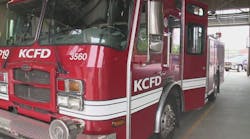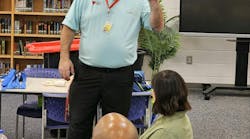Question: With a heightened awareness of customer service as a necessary part of any fire department's interaction with the community, is there a designated position within the department dedicated to this specific function?
Answer: Yes, there is a need for such a position and some departments have established positions with this responsibility.
Over the past few months, we have been discussing the basic elements of the customer service function for fire and emergency services. We pointed to the ongoing need for a customer service function in emergency and non-emergency situations. Virtually every aspect of our profession revolves around the desire to render care to our citizens in time of need. More and more, that care will involve prevention and education just as much as suppression and emergency medical service. This is especially true as we take on more responsibility for disaster preparedness and some aspects of health care.
From a marketing viewpoint, this is a very good thing for the fire service. It expands our involvement in the care of the community so that we can grow and maintain our services. This gives us consistent opportunities for the community to see us in our service role, giving us more visibility for political and financial support.
Implementation of a customer care system in face-to-face situations involves two critical aspects. The first relates to departmental standard operating procedures (SOPs) for all personnel in emergency and non-emergency situations. The second aspect speaks to the need for personnel to be assigned to customer care as a permanent departmental role, especially in a larger department.
In a department of any size, it is important to have a system that assigns line or non-emergency personnel to a customer care role in any encounter with the public. This is especially true for prevention. First, there is the need to explain code and inspection necessities to businesses. Second, the prevention interaction with business is on-going and, therefore, involves the need to grow and maintain a relationship that is positive as it revolves around an interactive, problem-solving approach instead of an enforcement mentality. You will especially find a receptive audience from the business community. This market segment understands that good, responsive customer service contributes to business growth.
Responsibilities Of Customer Care
When I first read Phoenix Fire Chief Alan Brunacini's Essentials of Fire Department Customer Service (FPP/IFSTA, 1996) nine years ago, I became fascinated with a model SOP he had placed in the appendix of his book. This SOP was for a sector of the incident command system called "occupant services sector." The concept is brilliant. I would like to paraphrase it, contributing my own observations and additional ideas.
The incident commander establishes the sector at all working structure fires and any incident where command identifies the need. This may be EMS, special operations or hazmat. The purpose is to extend the service of the department, establishing a liaison, a relationship, between the fire department and the citizens who are involved in or affected by the incident. Command may find the need to request additional resources as fitting the situation. This may involve additional engine or ladder companies or separate vehicles outfitted with tools and equipment to stabilize the situation. The focus of this extended service is on the customer who is experiencing the incident. This kind of service may be required well beyond the end of the actual emergency incident requiring the assignment of staff personnel.
Brunacini's occupant services sector has the critical responsibility of customer care: a customer care officer for the incident. The SOP points out some of the key responsibilities for good, empathetic customer care, critical for the most difficult and traumatic day a citizen or community may experience:
- Incident explanation. Explain to the occupant the nature of the incident, what the department is doing to stabilize the situation, and how long this will take and why.
Case Study: Oklahoma City
Many departments have established separate units responsible for customer care as a part of their community services divisions. The Oklahoma City Fire Department established a community services liaison section within the operations division.
In a conversation with Chief David Landsberger, he noted to me that OKCFD established the division six years ago with two officers per shift. The responsibilities include all of those dealing with the care and welfare of citizens during and after an incident. There is not a specific sector at the scene, but these customer care officers go code red to any incident where they are needed. After the incident, these officers check back with the citizens or business owners involved in the incident the next day, the next week and even six months after the incident.
The Future Fire Corps
The role of customer service will also expand as we continue to expand our services to the public. This role will provide the kind of empathetic concern and communications that every human requires from an agency with a mission like ours. The fact is that as our society becomes more complex, fast-paced and alienated, the need for understanding and care has never been greater. Seen in this light, the opportunities for us to serve and explain what we do have never been better. The question is who is going to do this kind of work? Landsberger noted that the OKCFD Citizens' Academy might be another source of non-uniformed support in this area if needed in the future.
The emergence of a new entity called Fire Corps may provide another partial answer. The purpose of Fire Corps is to provide volunteer non-emergency services to departments in the areas of marketing, finance, public relations, graphic design, accounting and secretarial staff services. Customer care could be one of these categories. Many people with professional backgrounds in these areas are just waiting for an opportunity to contribute to the fire service. A departmental training program addressing customer service for Fire Corps members could place them in positions to support and augment the role of line customer care officers. The result could be a significant contribution to the community as it widens the department's positive image in the community.
Ben May, a Firehouse contributing editor, has been developing the discipline of fire and emergency services marketing management for more than 15 years. He has been a firefighter for Montgomery County, MD, Fire and Rescue and fire commissioner for the Woodinville, WA, Fire and Life Safety District. May holds a bachelor's degree in public affairs from the University of Oklahoma and a master's degree in international communication from the American University in Washington, D.C. He has been a vice president of two international marketing firms over the last 25 years, and now is responsible for business development for Epcot at Walt Disney World Resort.





